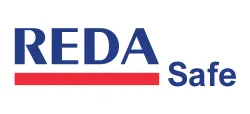Choosing the Appropriate Safety Eyewear for Your Job

Introduction
Eye protection is a key element in workplace safety across numerous industries in the U.S.
Every day, over 100 American workers experience eye injuries that require time off work. OSHA reports that these injuries cost employers around $300 million per year in associated expenses, not including legal costs, lost productivity, and other indirect costs.
Selecting appropriate protective eyewear and lens treatments is crucial. The right choice can enhance safety, functionality, comfort, and adherence to safety regulations.
To determine the most effective eye and face protection, it's critical to assess the hazards in your environment. Are you exposed to dust, metal fragments, soil, or splashes from liquids or chemicals? Identifying these dangers allows you to pick the most suitable level of eye protection.
Choosing the Right Type of Eyewear
Safety Glasses
Safety glasses serve as a protective barrier for your eyes, guarding against common workplace dangers. These include airborne materials such as shards, flying objects, and large chips, along with fine particles that could lead to eye injuries. Wearing safety glasses is an essential safety step for anyone working in environments where such hazards are a risk.
Safety Goggles
Safety goggles are essential for eye protection, designed to keep out flying pieces, objects, hefty chips, and fine particles.
They sit snugly against your face, encasing your eyes in a secure seal that keeps hazards from slipping through the sides or underneath.
For maximum protection, it's crucial that the frames of the safety goggles fit well against your face to maintain this seal. Goggles that don't fit correctly won't provide adequate defense against potential risks.
Various designs of safety goggles are available, each providing different levels of eye protection:
- Safety Goggles with Eye Cups: These offer full coverage of the eye area. You can choose from models with direct or indirect ventilation, as well as options that are either rigid or flexible in design.
- Direct Vented: These are designed to block large particles while allowing air circulation to reduce lens fogging.
- Indirect Vented: Ideal for safeguarding against splashes from liquids and chemicals, these also permit airflow to help keep the lenses clear.
- Non-Ventilated: These types provide a complete barrier against splashes but do not allow air in, which can lead to fogging and might require regular lens cleaning.
- Cover Safety Goggles: These are specifically made to fit over prescription glasses without affecting their fit or comfort.
Face Shields
Face shields are crafted to guard your whole face—or specific parts of it—against impacts from flying debris, objects, chips, and particles.
It's important to note that face shields, when used by themselves, are not sufficient for impact protection. To meet OSHA regulations, they should always be worn in combination with safety glasses or goggles that are ANSI-certified.
Choosing the Right Lens for Your Safety Glasses or Goggles
Selecting the appropriate lens coating or tint for your safety eyewear is a crucial choice.
Which lens coating is most suitable for your workplace? Let's delve into the various options and their optimal applications. Each type of coating serves a distinct purpose, enhancing the functionality of safety goggles or glasses under specific conditions. Understanding these differences ensures you're equipped with the best protection for your eyes on the job.
Anti-Fog Lens Coating
Foggy lenses on safety glasses can momentarily obscure your sight, which might lead to hazardous scenarios. To combat this, manufacturers enhance safety eyewear with anti-fog coatings. These special treatments are designed to prevent condensation from forming on the lenses, ensuring clear vision and maintaining safety standards in environments where quick changes in temperature or high humidity could otherwise impair visibility.
Scratch-Resistant Hardcoat
A scratch-resistant hardcoat is key to prolonging the lifespan of safety eyewear lenses while enhancing the sharpness of your vision. Despite this protective layer, safety glasses can still incur damage through regular use. It's important to regularly inspect your eyewear and replace it if you notice any scratches or other signs of damage, as even minor imperfections can compromise your safety and obstruct your vision.
Mirror Coating
Mirror coatings on safety eyewear are especially beneficial for those working in hot conditions where infrared radiation is a concern. These mirrored lenses usually pair with a tinted lens base, offering an added layer of defense against the sun's glare and intense light. They are an excellent choice for outdoor job sites, providing both comfort and protection to your eyes while you work under bright conditions. This dual feature of mirror and tint enhances visibility and reduces eye strain, making it easier to focus on tasks without the distraction of excessive light or heat.
Indoor/Outdoor Lens
Indoor/outdoor lenses are versatile and perfectly suited for fluctuating light environments. They're the ideal choice for individuals who frequently transition between indoor settings and outdoor areas during their daily routine. These lenses adapt to different lighting, ensuring clear vision and comfort no matter where your job takes you. Whether you're stepping out into the bright sun from a dimly lit building or going back inside, these lenses help maintain consistent visibility.
Gray Lens
Gray lenses are excellent for safeguarding your eyes from sunlight when working outdoors. They help to reduce brightness and glare, providing comfort and better visibility in sunny conditions. This makes them an essential piece of safety gear for outdoor workers, ensuring that vision remains clear and unaffected by the harsh light of the sun.
Amber Lens
Amber lenses are an optimal choice for working in low-light conditions. They filter out blue light, enhancing overall contrast and clarity. This feature allows you to discern objects in your surroundings more easily, making amber lenses particularly useful in settings where sharp visual contrast is necessary for safety and precision.
Vermilion Lens
Vermilion lenses, recognized by their distinctive pink hue, are designed to enhance visual sharpness. They are particularly effective for tasks that involve inspection and intricate detail work. The unique color of these lenses helps in fine-tuning the focus for activities requiring close attention to detail, making them a valuable asset for precision-based jobs.
Blue Lens
Blue lens safety glasses are ideal for environments where sodium vapor lighting is prevalent and glare is intense. These lenses are engineered to manage the harsh glare and improve visibility, making them an excellent choice for workplaces with challenging lighting conditions. They help reduce eye strain and enhance visual comfort, allowing you to work more effectively in settings where bright lights can be distracting or discomforting.
Copper Blue Block
Copper blue block lenses are designed to cut down on glare much like gray or mirrored lenses do, yet they offer a clearer, more luminous view. This makes them a superior option for maintaining visibility while still shielding the eyes from bright and reflective light sources. These lenses strike a balance between protection and clarity, ensuring that your field of vision remains bright and unobstructed.
Green Shade 3.0 and 5.0
These types of lenses are particularly beneficial in environments where welding, brazing, or cutting tasks are being performed. They provide protection from the intense light and sparks associated with these activities. It's important to note, though, that these lenses are not a substitute for welding masks and should not be used for actual welding work. They are designed to offer supplementary protection in the vicinity of such operations.
Polarized Lens
Polarized lenses are excellent for outdoor workers as they eliminate glare from reflective surfaces, making them perfect for bright and sunny environments. This glare reduction not only improves comfort but also enhances visibility, making it easier to see and focus on tasks without the distraction of harsh light. These lenses are a crucial tool for anyone working outside, helping to protect eyesight and prevent the squinting that often comes with working in sunny conditions.
Maximize Daily Use with the Right Eyewear
Managers often experience frustration upon noticing their team members not wearing safety glasses or goggles.
Displaying reminder signage can emphasize the importance of eye protection and affirm the company's commitment to a safety-first culture.
Rather than simply expecting adherence, it's beneficial to understand why employees may not be using their protective eyewear. Issues with comfort, such as poorly fitting gear, can be addressed with eyewear that offers adjustable inclination. If the goggle straps cause discomfort, options with straps made from alternative materials may be more appealing.
Providing the right type of protective eyewear that fits well not only increases compliance but also enhances overall workplace safety.
Conclusion
In conclusion, choosing the right safety eyewear is a critical decision that affects not just individual health and safety but also the overall safety culture of a workplace. Understanding the specific needs of your job and the risks involved is the first step to selecting the right type of glasses or goggles. From anti-fog coatings to scratch-resistant hardcoats, and various lens tints like gray, amber, and polarized options, each feature serves a purpose to improve visibility and protect your eyes. Remember, the best safety eyewear is the one that you wear consistently, so comfort and fit are just as important as the protective features. By equipping yourself with the appropriate safety eyewear, you are investing in your most valuable asset—your vision. Stay safe and ensure you are always looking out for your eyes in any work environment.
